In this interview, we sit down with Raimonds Selga, co-founder and board member of Kalve Coffee, a fast-growing specialty coffee brand based inLatvi ...
How Bombay Eats Brings Authentic Indian Cuisine to Chicago
Written by: Carolyn Young
Carolyn Young is a business writer who focuses on entrepreneurial concepts and the business formation. She has over 25 years of experience in business roles, and has authored several entrepreneurship textbooks.
Published on September 2, 2024
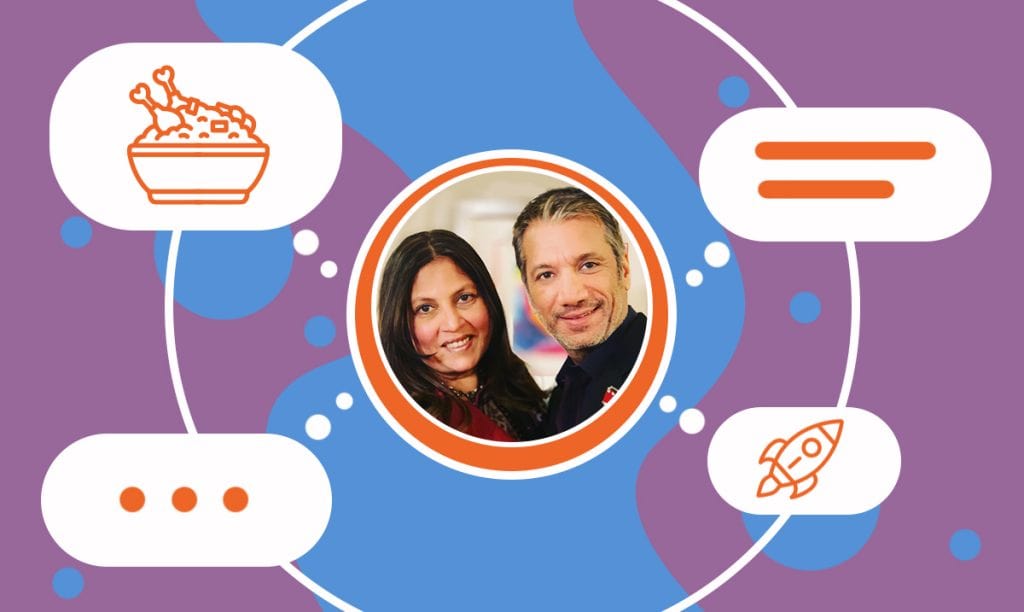
Ali Dewjee and his wife Falguni embarked on a flavorful mission 14 years ago when they founded Bombay Eats, originally known as Bombay Wraps. With a passion for bringing fast-casual Indian cuisine to a broader audience in Chicago, they have successfully blended traditional flavors with modern dining concepts.
In this interview, Ali reflects on the inspirations, challenges, and triumphs of their journey, offering valuable insights into the world of restaurant entrepreneurship and the significance of community involvement.
Inspiration and Vision
SBS – What inspired you to start Bombay Eats?
Ali – My wife and I grew up in entrepreneurial environments in Bombay, India. She grew up around her dad’s sweet dessert store, and I grew up around my mom’s beauty salon. We came to the US to do our MBAs. I pursued a corporate path, working for companies like Campbell Soup, Tropicana, and PepsiCo.
After bouncing around the US a little bit, we landed in Chicago 18 years ago (Pepsi moved me from Dallas to Chicago), and my wife said it was a great opportunity for us to start something. When we looked at the marketplace, Indian food was still in what I call the 1.0 phase, meaning expansive menus, like lunch buffets. Honestly, it was a little intimidating for somebody who hadn’t tried Indian food before — they’d go into a buffet and see a long line of yellow, orange, and red curries, which would confuse them, and they would leave.
We came up with the concept of Indian food in its simplest form — street style — and started with Bombay Wraps to make our food more approachable for more people to enjoy. We took four meat items and four vegetarian items. In India, vegetarian food is very popular, and half of our menu, even today, is vegetarian. We had two meals with chicken, one beef, one lamb, cheese paneer (which is the most popular), chickpeas, potato, and cauliflower. We also had a few sides and a few drinks. That’s it.
We like simple because I think simple makes it approachable and not as intimidating. Now, people are exploring global cuisines. Like I always joke, music and food are a great way to experience a culture, so when it’s a simple cuisine, it will attract more people.
Menu Innovation
SBS – How did you decide to turn your concept into wraps, roles, and bowls for your menu?
Ali – When we started 14 years ago, as I said, it was a simple concept of just wraps, a few sides (samosas, being very popular), and drinks (like lassis). We were the first Indian restaurant in Chicago to focus on fast-casual, street-style food, very much like Chipotle. That Chipotle-like flow was an inspiration to us, and people were familiar with it. I didn’t need to create something new.
As time progressed and customer’s needs changed, we continued evolving the concept. Because our background is in MBA and marketing strategy, we were consumer-oriented. Our rule is to always adjust to what your consumer wants. Also, 14 years is a long time, and Indian food has become much more popular in the US during those years. New York, I think, is the pinnacle of Indian food. Chicago is still a baby when it comes to it. Still, as the market grew, we introduced rice bowls. When you think of lunch, you think of something quick on the go, and you think of wraps. Chipotle made rice bowls very popular, and we introduced those as a sort of dinner option.
Indian rice is basmati, a long grain. It’s nice, flavorful, and healthier than your regular rice. We also added wild rice to our rice bowls. As this whole health and wellness trend came about and people started wanting to feel good, look good, and eat something lighter, we introduced a salad bowl. Then, about three years ago, we introduced a bread roll, which is like a lobster roll. Our eight items (four meat and four veggie options) stayed the same, but the base has become wraps, rolls, and bowls. It’s also easy to say.
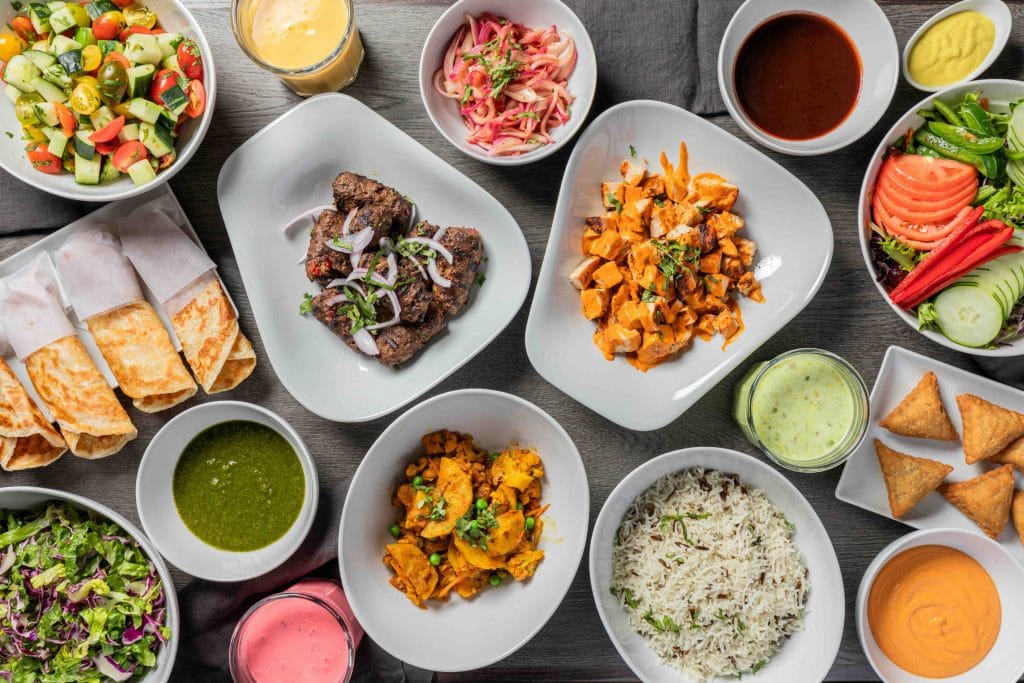
Early Challenges
SBS – What challenges did you face in the first couple of years?
Ali – It’s said that about 80% of new businesses or restaurants fail in the first year. We came in with a consumer and business mindset, not a chef-driven mindset. I think that may have been a blessing and a little bit of a challenge in the beginning.
The challenge was that we didn’t know how to do things. We had the recipes, but we overstaffed people because we didn’t know. A silly example always sticks in my mind. We used to buy cut onions and not cut them ourselves, and the cost of that was much higher. So, what one thinks of as basic logic in one area does not necessarily translate to the restaurant business because the restaurant has its own logic, knowledge, and flow.
In the first year and a half, we lost money. I told my wife to think of that as paying for tuition to go to culinary school. We were learning on the job. It took a minute, but we were resilient and stuck to the concept. What was the core? A lot of consumers said they loved it and were excited about it. It was the first-of-a-kind restaurant in Chicago. People enjoyed that fast, in-and-out concept. You pay $10 and are in and out in two minutes.
That’s what got me motivated. The challenge for us was how to unfold it and make it into a viable business, how to staff it, how to procure the ingredients, how to prep them, and how to make everything fresh in the morning and ensure there was no waste for us. Initially, it was learning about a whole new industry.
However, not being a chef was good because we always had the consumer in mind. For a business to succeed, it’s all about the customer. Customer delight is one of our pillars. It’s not about your food being great or having 100 options but about what the customer wants.
Quality Assurance
SBS – How do you ensure the quality of your dishes?
Ali – It goes back to the core proposition. Our niche is Indian fast casual— not Indian fine dining or Indian fast food. Fast has to be quick and affordable. Given those constraints, we realized early on that this concept could be multiplied.
If you think about it, there are two kinds of restaurants. One is a flagship restaurant with a large number of seats. There are chefs and sous chefs. While making recipes, they adjust something on the fly. Ours was very much a simpler, replicable concept. We decided to write the recipes very tight. You cannot just add a pinch of something because you feel like it. You must follow the recipes. What tablespoon? What teaspoon? What’s the cooking time? What’s the stirring time? What’s the sitting time? We took time to document all of that upfront. Then, as we grew, each location followed the exact same recipes.
One of my favorite questions for my customers is, “Which location do you like the best?” I’m hoping the answer is always, “They all taste the same,” because that’s what we want to achieve.
Catering Success
SBS – How much have your catering services contributed to your business growth?
Ali – I find it fascinating when I look back on things after all these years. Maybe it was luck. Sometimes, I’m not a big believer in that. I have a quote on luck. It says, “The harder you work, the luckier you get.”
Our first location was in the business district in Chicago called the Loop. It’s very much like a mini New York.
Think about the customer journey. You come to a new restaurant, try the food, and like it. The next thing you do is to take the food back to your office and share it with your colleagues. Catering automatically became a very big part of the industry. They say catering should be about 20% to 25% of your business, but I think it’s 30% to 35% of ours because that’s what people wanted. People from that business district knew us, and when they had lunch meetings, they’d order from us. That’s how the catering program grew.
You’ll notice that evolution and being nimble are trends in everything I say. We continue to evolve. I’m proud of how far our catering has come. For example, we have a grab-and-go box. It’s a nice white box with a logo and label containing all the ingredients and allergens. There’s also a QR code that links to the website if you want more information. You open the box, and there’s a wrap, a side of samosas, dipping chutney, a pack of imported cookies, and a utensil set.
The presentation is very important. Think about it like an admin from a company ordering from you. They don’t want a very complicated menu. We have a grab-and-go box, a grab-and-go rice bowl, and a rice platter, all priced the same. That’s easy for an admin to order, even if they’re ordering for 150 people. It’s all labeled very nicely. There’s no mystery food.
Client Strategies
SBS – How much have your client acquisition and retention strategies evolved?
Ali – I learned about this marketing strategy at Pepsi earlier in my career. The first thing is awareness. You have to be aware of a brand. The second is relevance. It has to be relevant to you because if you see something irrelevant, you tune it out. Then, you move down the funnel, and there is a trial. If you’re aware of something relevant to you, you want to try it. If you try it and like it, you will repeat it. If you repeat it, you’ll love it and want to tell everybody about it. So, when we think about attracting new and maintaining repeat customers, we look at that funnel of awareness, relevance, and trial, and we have marketing tactics that drive large-scale awareness.
Different audiences like to be spoken to differently. For example, when we introduce a new location, we send mailers to all the zip codes around it. We work with a company that makes these nice plastic mailers with little coupons for a free samosa or something.
We also do social media advertising for relevancy. We have a big Facebook and Instagram following and boost ads on those platforms. Our tagline is Fresh Indian Fast, so if that message is relevant to you, you’ll come in and try it.
Four or five years ago, we worked with a professional company that upgraded our website four. It’s all SEO-optimized, and everything is tight on the back end. If you type in “Indian food near me” or “restaurants near me,” we pop up. That’s all part of the awareness.
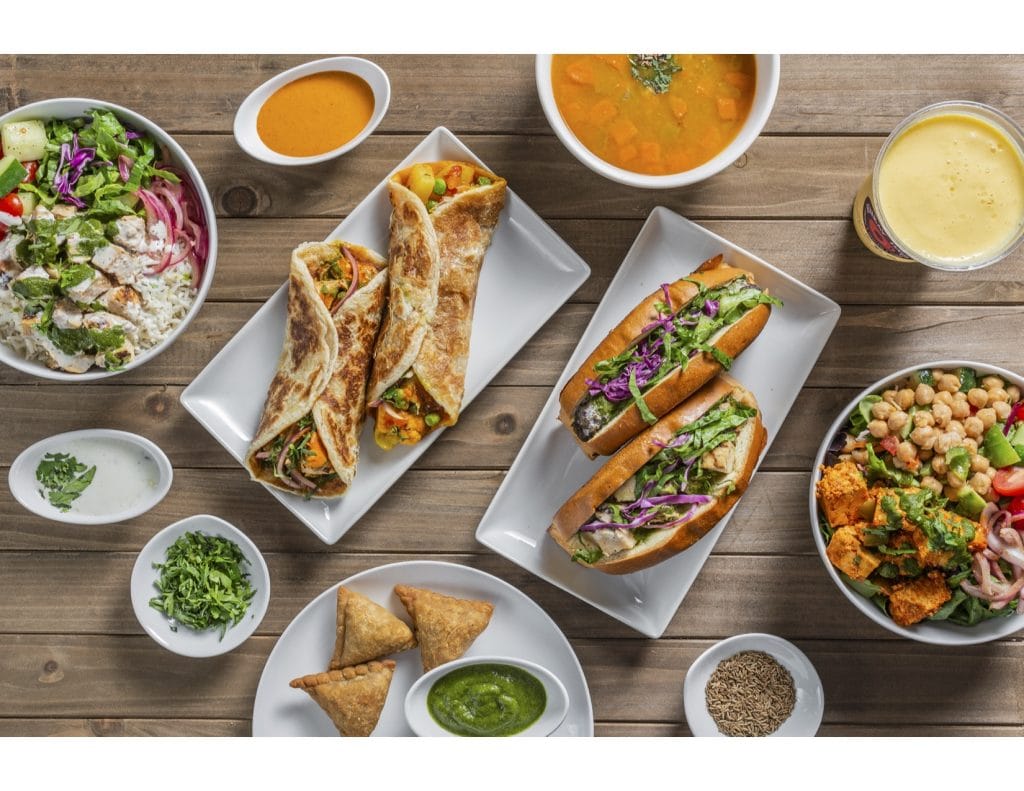
Rewards Program
SBS – How has your rewards program impacted customer loyalty?
Ali – It goes back to the type of restaurant you have. If you look at the restaurant industry, a lot of it is broken into segments. There’s fine dining, sit-down casual, fast casual, and fast food. Our loyal customers are in our stores maybe three or four times a week, so I think having a rewards program is great to show them appreciation and keep them coming.
For the last five years, we have used a POS system called Toast and its reward program. For every dollar you spend, you get 10% cashback. If you spend $100, you get $10 back. Our reward program is very popular, and I see it coming through our orders all the time. It’s a very simple reward program. The more you use it, the more you get rewards. It’s very clear, and there are no restrictions or conditions.
In the last year, I’ve been looking at different restaurant shows, like the national show, where I meet people to see what other reward programs they use. Early next year, we may switch to a more robust rewards program where you get a free samosa if you come X times. This way, we are giving more food, and I prefer giving you food than dollars.
Community Engagement
SBS – How has community involvement affected your business?
Ali – The community became a big buzzword during COVID and post-COVID. I’ll be honest and let you know that we have participated in community events since we started. We always give back to the community where we live, work, and play.
From the beginning, we started participating in smaller Indian organizations. There’s an organization called Apna Ghar that raises money for battered women and provides them shelter. There’s another organization called Surge for Water that collects money to provide drinkable water in developing nations. We participated in many of those organizations — and then came COVID.
We wanted to think more about our strategy, so we created a brand called Bombay Cares as our community outreach program. During COVID, we gave away 2,000 meals to essential workers around Chicago. Hospitals have always supported us, and it was our turn to give back to them when they needed it.
After that, our strategy became a little more formal and structured. We participate in Indian organizations and smaller local organizations (for example, Shedd Aquarium), and we recently signed a contract with St. Jude’s Hospital, our first national organization. St. Jude’s has their big annual fundraiser next month, and we’ll be one of the restaurants providing food. At those events, just to give you a sense, we give away 300, 400, or 500 samosas. Our team goes there and serves that food. People are excited to try new food and see something new. We are there supporting them and adding a little more flavor.
Digital Transformation
SBS – How does your online ordering system work, and how did it benefit your business, especially during COVID?
Ali – That’s such an important question because I think the trajectory of restaurants has changed. We had a pre-COVID era, a COVID era, and now there is post-COVID. So, there are three chapters in my 14 years of business.
We always had a takeout delivery business because our wraps are easy to make and deliver. During COVID, many more people started eating at home. Now, in this post-COVID work-from-anywhere world we live in, there’s a lot more takeout. That means our dine-in business has gone down, but our takeout and delivery have gone up.
We retooled our online ordering system. We use Toast, which has a nice, simple ordering system that allows people to customize their food by choosing sauces and condiments and adding rice, onions, lettuce, cabbage, etc.
There are also secret menu items only available on bombayeats.com, giving people another incentive to come. Our prices are always the lowest, and there’s no service fee. We also have an app for people on the go.
Talking about ease of ordering in two of our locations, we also have a kiosk. The younger generations don’t want to talk to or deal with people, so they go to the kiosk, place the order, pick up the food, and leave. That’s another part of creating frictionless ordering. However you want to order, that’s what I will provide.
Right now, we’re also exploring the phone AI. We know the older customers, maybe Gen X or a bit older, want to come in person. They’re uncomfortable placing orders online or giving their credit card data online. At one of the shows, we met this company that does AI digital ordering. You order, and they take you through the whole order process. We’re in our busy season (summer in Chicago is very busy), so maybe in the next three or four months, we’ll launch this feature.
Words of Wisdom
SBS – What advice would you give someone who wants to start a restaurant business?
Ali – I have two things to say. One is about restaurants, and one is a bit broader. One of my favorite quotes that I’ve developed is, “In the restaurant business, food is the most important 20%.” It sounds very counterintuitive because you may think a restaurant should be all about food. If you have a pillar of 100%, 20% is food. Once you get past that food, you have nothing. The remaining 80% are the team, the finances, the procurement, the customer marketing, the insight, the management, the pricing, and all the other elements where the business mind comes in to balance it out. Many people say they love to cook at home, so they want to open a restaurant. But it’s not all about the food. It’s about the overall business proposition.
Subscribe to Our Newsletter
and gain insider access to cutting-edge business insights and trends.
Featured Resources
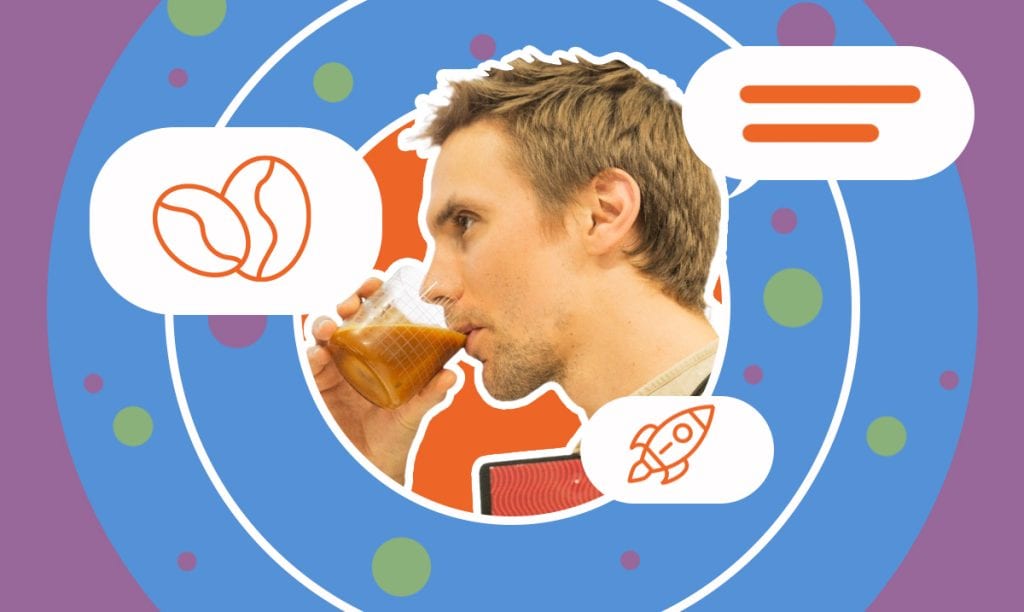
How Kalve Makes High-End Coffee Accessible for Everyone
Published on April 3, 2025
Read Now
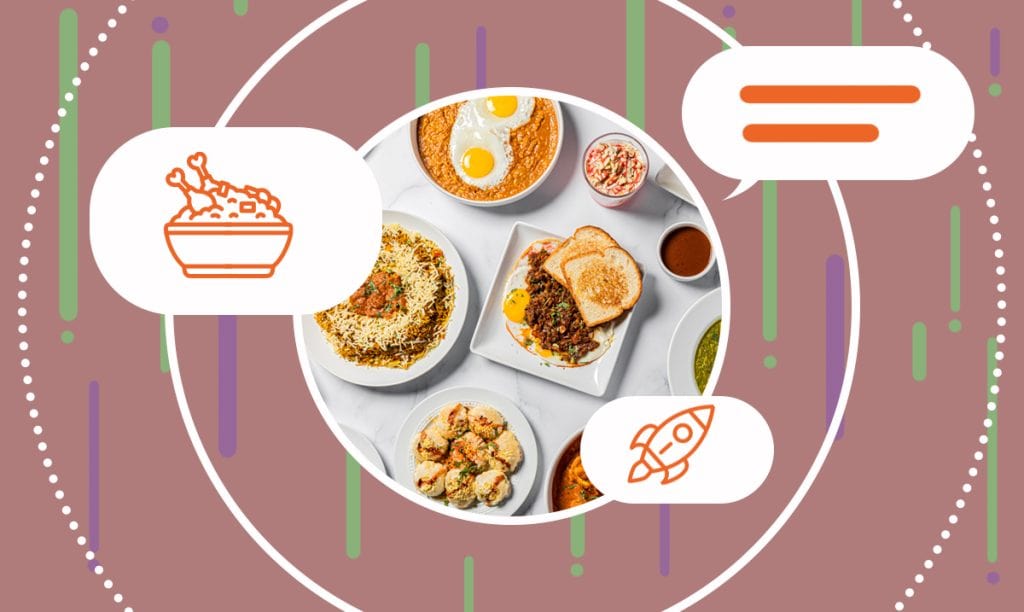
How Eggholic is Bringing Authentic Indian Street Food to the US
Published on February 25, 2025
In this interview, we speak with Bhavana Singh, the visionary behind Eggholic, a restaurant that brings the authentic flavors of Gujarat’segg- ...
Read Now
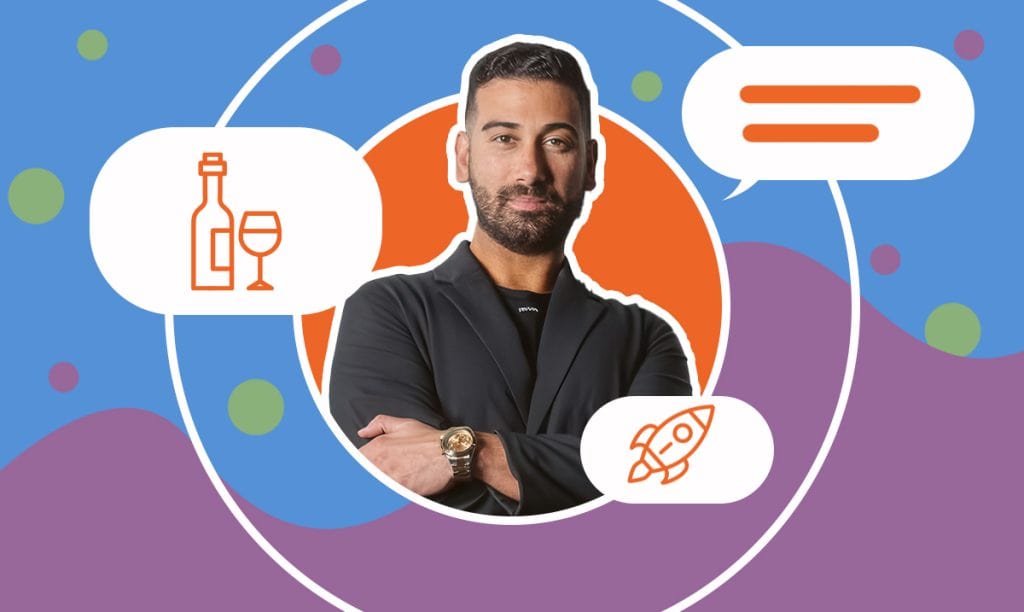
How a Historic Theater Became Houston’s Chic Bar
Published on January 2, 2025
Nestled in the heart of Houston’s Montrose neighborhood, Clarkwood is more than just a chic wine and cocktail bar— it’s a celebration ofhistor ...
Read Now
Comments